2025 Vol. 16, No. 5
2025, 16(5): 639-646.
doi: 10.15886/j.cnki.rdswxb.20240069
Abstract:
Pathogenic bacterial infections release large amounts of lipopolysaccharides that disrupt the structure of intestinal tight junction proteins, leading to increased intestinal permeability, causing dysfunction of the intestinal epithelial barrier, and inducing severe intestinal inflammation. Sodium butyrate (SB), as a type of short-chain fatty acid, has an important role in relieving intestinal inflammation. However, its properties such as volatility and low utilization rate seriously affect its application. Therefore, the design and development of sodium butyrate drug delivery system is important to improve the utilization and effect of sodium butyrate. In this context the nature of cross-linking of chitosan (CS) and hyaluronic acid in the presence of sodium tripolyphosphate was made full use of to form CS-SB nanoparticles by encapsulating SB in the particles. CS-SB was characterized by transmission electron microscopy and laser particle size analysis, and was found to be irregularly spherical with a particle size of approximately (97.30 ± 4.20) nm. SB was able to release in PBS buffer, reaching a cumulative release of (116.27 ± 7.75) ng over 24 h. A lipopolysaccharide-induced intestinal cellular inflammation model was constructed, and it was found that CS-SB could effectively inhibit the expression of cellular pro-inflammatory factors and play a role in alleviating inflammation. The drug delivery system developed using natural products such as chitosan can effectively overcome the shortcomings of sodium butyrate, which is volatile, and provides a new idea for designing new bioactive oral drug delivery systems.
Pathogenic bacterial infections release large amounts of lipopolysaccharides that disrupt the structure of intestinal tight junction proteins, leading to increased intestinal permeability, causing dysfunction of the intestinal epithelial barrier, and inducing severe intestinal inflammation. Sodium butyrate (SB), as a type of short-chain fatty acid, has an important role in relieving intestinal inflammation. However, its properties such as volatility and low utilization rate seriously affect its application. Therefore, the design and development of sodium butyrate drug delivery system is important to improve the utilization and effect of sodium butyrate. In this context the nature of cross-linking of chitosan (CS) and hyaluronic acid in the presence of sodium tripolyphosphate was made full use of to form CS-SB nanoparticles by encapsulating SB in the particles. CS-SB was characterized by transmission electron microscopy and laser particle size analysis, and was found to be irregularly spherical with a particle size of approximately (97.30 ± 4.20) nm. SB was able to release in PBS buffer, reaching a cumulative release of (116.27 ± 7.75) ng over 24 h. A lipopolysaccharide-induced intestinal cellular inflammation model was constructed, and it was found that CS-SB could effectively inhibit the expression of cellular pro-inflammatory factors and play a role in alleviating inflammation. The drug delivery system developed using natural products such as chitosan can effectively overcome the shortcomings of sodium butyrate, which is volatile, and provides a new idea for designing new bioactive oral drug delivery systems.
2025, 16(5): 647-653.
doi: 10.15886/j.cnki.rdswxb.20240172
Abstract:
In order to develop insecticides with photoactivation activity, Aedes aegypti was used as the target organism to determine the insecticidal activity of 6 acridine derivatives and explore the activity mechanism of the highly active compound. The results showed that all the tested compounds were photosensitive and had no insecticidal activity under dark conditions. The insecticidal activity of all compounds increased significantly after UV irradiation, among which 9-phenylacridine had the highest activity (LC50 = 0.717 mg·L−1). At the concentrations of LC50 and LC75, the 9-phenylacridine could significantly reduce the pupation rate and emergence rate and increase the mortality rate of pupae while inhibit chitinase activity; the ROS level was increased in the tested insects; the activities of SOD and CAT showed a trend of increasing first and then decreasing; the activity of POD increased. What’s more the AchE activity was inhibited by 9-phenylacridine with LC75 concentration. It is speculated that 9-phenylacridine can induce the organism to produce ROS and cause oxidative damage to the organism, thus exerting insecticidal activity. It is concluded that 9-phenylacridine has the potential to be developed into photoactivated insecticide.
In order to develop insecticides with photoactivation activity, Aedes aegypti was used as the target organism to determine the insecticidal activity of 6 acridine derivatives and explore the activity mechanism of the highly active compound. The results showed that all the tested compounds were photosensitive and had no insecticidal activity under dark conditions. The insecticidal activity of all compounds increased significantly after UV irradiation, among which 9-phenylacridine had the highest activity (LC50 = 0.717 mg·L−1). At the concentrations of LC50 and LC75, the 9-phenylacridine could significantly reduce the pupation rate and emergence rate and increase the mortality rate of pupae while inhibit chitinase activity; the ROS level was increased in the tested insects; the activities of SOD and CAT showed a trend of increasing first and then decreasing; the activity of POD increased. What’s more the AchE activity was inhibited by 9-phenylacridine with LC75 concentration. It is speculated that 9-phenylacridine can induce the organism to produce ROS and cause oxidative damage to the organism, thus exerting insecticidal activity. It is concluded that 9-phenylacridine has the potential to be developed into photoactivated insecticide.
2025, 16(5): 654-662.
doi: 10.15886/j.cnki.rdswxb.20240175
Abstract:
To explore the evolutionary history of the Bradyrhizobium and its plastic degradation-related gene the hydroxylase gene CYP450, and to understand the mechanisms by which the genus acquires its plastic degradation potential. In this study, 28 fully assembled strains of Bradyrhizobium were collected to investigate the evolution and dissemination of Bradyrhizobium and their hydroxylase genes CYP450 through comparative genomic and phylogenetic analyses. The results revealed that, compared to the core genes, the unique and accessory genes of Bradyrhizobium exhibited an increase in functions related to plastic degradation, such as membrane transport, xenobiotic biodegradation and metabolism, lipid metabolism, and signal transduction. Bradyrhizobium has an open pan-genome, enabling it to acquire genes from other species, adapt to new environments, and evolve new functions. Analysis of the flow of the hydroxylase gene CYP450 in bacteria and archaea revealed that Bradyrhizobium likely acquired hydroxylase gene CYP450 from the Actinobacteria phylum through horizontal gene transfer, thus gaining the potential for plastic degradation.
To explore the evolutionary history of the Bradyrhizobium and its plastic degradation-related gene the hydroxylase gene CYP450, and to understand the mechanisms by which the genus acquires its plastic degradation potential. In this study, 28 fully assembled strains of Bradyrhizobium were collected to investigate the evolution and dissemination of Bradyrhizobium and their hydroxylase genes CYP450 through comparative genomic and phylogenetic analyses. The results revealed that, compared to the core genes, the unique and accessory genes of Bradyrhizobium exhibited an increase in functions related to plastic degradation, such as membrane transport, xenobiotic biodegradation and metabolism, lipid metabolism, and signal transduction. Bradyrhizobium has an open pan-genome, enabling it to acquire genes from other species, adapt to new environments, and evolve new functions. Analysis of the flow of the hydroxylase gene CYP450 in bacteria and archaea revealed that Bradyrhizobium likely acquired hydroxylase gene CYP450 from the Actinobacteria phylum through horizontal gene transfer, thus gaining the potential for plastic degradation.
2025, 16(5): 663-672.
doi: 10.15886/j.cnki.rdswxb.20250028
Abstract:
Cassava (Manihot esculenta), a crucial staple and bioenergy crop, faces significant yield and quality losses due to oxidative stress induced by environmental factors such as drought and high temperature. Previous studies have demonstrated that MeKIN10, a protein kinase associated with energy sensing in cassava, enhances oxidative stress tolerance by mediating the phosphorylation of MeRAV1/2. While protein-protein interaction is essential for kinase-mediated phosphorylation, the specific interaction regions between MeKIN10 and MeRAV1/2 remain elusive. In this context the interaction regions of MeKIN10 and MeRAV1/2 were identified through protein domain analysis, AlphaFold3 prediction and yeast two-hybrid experiment. The results demonstrate that the STKc-AMPK-alpha kinase domain of MeKIN10 is the key domain in its interaction with MeRAV1/2, which further indicates that the protein interaction between MeKIN10 and MeRAV1/2 is the key in mediating the phosphorylation of MeRAV1/2.
Cassava (Manihot esculenta), a crucial staple and bioenergy crop, faces significant yield and quality losses due to oxidative stress induced by environmental factors such as drought and high temperature. Previous studies have demonstrated that MeKIN10, a protein kinase associated with energy sensing in cassava, enhances oxidative stress tolerance by mediating the phosphorylation of MeRAV1/2. While protein-protein interaction is essential for kinase-mediated phosphorylation, the specific interaction regions between MeKIN10 and MeRAV1/2 remain elusive. In this context the interaction regions of MeKIN10 and MeRAV1/2 were identified through protein domain analysis, AlphaFold3 prediction and yeast two-hybrid experiment. The results demonstrate that the STKc-AMPK-alpha kinase domain of MeKIN10 is the key domain in its interaction with MeRAV1/2, which further indicates that the protein interaction between MeKIN10 and MeRAV1/2 is the key in mediating the phosphorylation of MeRAV1/2.
2025, 16(5): 673-681.
doi: 10.15886/j.cnki.rdswxb.20250007
Abstract:
To further explore the key genes regulating drought resistance in soybean, the peroxidase gene GmPOD123, which is significantly induced under drought stress, was screened based on previous transcriptomic analyses (RNA-Seq) of soybean leaves under drought stress. An expression analysis of the soybean GmPOD123 gene under drought stress was performed to identify whether GmPOD123 is involved in response to drought stress, and the results showed that GmPOD123 was significantly up-regulated after 3 h stress treatment. Moreover, phenotype identification of transgenic Arabidopsis plants of overexpressing GmPOD123 showed that overexpression of GmPOD123 in Arabidopsis could increase the drought tolerance, which was compared to wild type Arabidopsis. To further explore the drought-resistant molecular mechanism of GmPOD123, fructose-1,6-bisphosphate aldolase (GmFBA2), an interacting protein of GmPOD123, was screened from the soybean cDNA yeast library by Mating, and its interaction with GmPOD123 was identified by yeast two-hybrid system and luciferase complementation assay (LCA). In summary, GmFBA2 may influence ROS levels by interacting with GmPOD123, thereby regulating soybean drought resistance.
To further explore the key genes regulating drought resistance in soybean, the peroxidase gene GmPOD123, which is significantly induced under drought stress, was screened based on previous transcriptomic analyses (RNA-Seq) of soybean leaves under drought stress. An expression analysis of the soybean GmPOD123 gene under drought stress was performed to identify whether GmPOD123 is involved in response to drought stress, and the results showed that GmPOD123 was significantly up-regulated after 3 h stress treatment. Moreover, phenotype identification of transgenic Arabidopsis plants of overexpressing GmPOD123 showed that overexpression of GmPOD123 in Arabidopsis could increase the drought tolerance, which was compared to wild type Arabidopsis. To further explore the drought-resistant molecular mechanism of GmPOD123, fructose-1,6-bisphosphate aldolase (GmFBA2), an interacting protein of GmPOD123, was screened from the soybean cDNA yeast library by Mating, and its interaction with GmPOD123 was identified by yeast two-hybrid system and luciferase complementation assay (LCA). In summary, GmFBA2 may influence ROS levels by interacting with GmPOD123, thereby regulating soybean drought resistance.
2025, 16(5): 682-691.
doi: 10.15886/j.cnki.rdswxb.20250009
Abstract:
Colletotrichum gloeosporioides is the main pathogen causing anthracnose of rubber tree (Hevea brasiliensis). The common in fungal extracellular membrane (CFEM) domain is a unique motif of fungi, and the proteins containing CFEM and transmembrane domains are defined as Pth11-like CFEM protein, which plays important roles in regulating the development and pathogenicity of pathogenic fungi. In order to study the pathogenesis of C. gloeosporiorides, a gene encoding Pth11-like CFEM protein was screened from the transcriptome of C. gloeospriorides and named as CgCFEM17. The encoding region of the gene CgCFEM17 is 1341bp in length and encodes a peptide with 446 amino acids. Bioinformatics analysis showed that the N-terminus of CgCFEM17 has a signal peptide with 26 amino acids and a conserved CFEM domain, and the C-terminus contained six transmembrane domains. The knockout mutant strain (∆CgCFEM17) and complementary strain (∆CgCFEM17-C) of the gene CgCFEM17 were constructed to analyze the function of CgCFEM17. The results showed that the conidium germination and invasion structure of ∆CgCFEM17 were delayed compared with the wild type and complementary strain, but the colony growth rate, conidiation, appressorium formation rate, and morphogenesis were not changed. These results indicated that the gene CgCFEM17 could affect the pathogenicity of C. gloeosporioides on rubber tree by regulating the germination process of conidia and delaying the formation of infection structure, which lays a theoretical foundation for exploring of the pathogenic mechanism of C. gloeosporioides and establishing of a new control strategy for anthracnose of rubber trees.
Colletotrichum gloeosporioides is the main pathogen causing anthracnose of rubber tree (Hevea brasiliensis). The common in fungal extracellular membrane (CFEM) domain is a unique motif of fungi, and the proteins containing CFEM and transmembrane domains are defined as Pth11-like CFEM protein, which plays important roles in regulating the development and pathogenicity of pathogenic fungi. In order to study the pathogenesis of C. gloeosporiorides, a gene encoding Pth11-like CFEM protein was screened from the transcriptome of C. gloeospriorides and named as CgCFEM17. The encoding region of the gene CgCFEM17 is 1341bp in length and encodes a peptide with 446 amino acids. Bioinformatics analysis showed that the N-terminus of CgCFEM17 has a signal peptide with 26 amino acids and a conserved CFEM domain, and the C-terminus contained six transmembrane domains. The knockout mutant strain (∆CgCFEM17) and complementary strain (∆CgCFEM17-C) of the gene CgCFEM17 were constructed to analyze the function of CgCFEM17. The results showed that the conidium germination and invasion structure of ∆CgCFEM17 were delayed compared with the wild type and complementary strain, but the colony growth rate, conidiation, appressorium formation rate, and morphogenesis were not changed. These results indicated that the gene CgCFEM17 could affect the pathogenicity of C. gloeosporioides on rubber tree by regulating the germination process of conidia and delaying the formation of infection structure, which lays a theoretical foundation for exploring of the pathogenic mechanism of C. gloeosporioides and establishing of a new control strategy for anthracnose of rubber trees.
2025, 16(5): 692-700.
doi: 10.15886/j.cnki.rdswxb.20250039
Abstract:
Root-knot nematodes (Meloidogyne spp.) are one of the most important plant parasitic nematodes worldwide, which seriously threatens agricultural production. Application of nematicides around the root-zone is still the main control method. Tomato plants in pots were foliar sprayed with nematicides to explore the pot control efficacy of the nematicides against root-knot nematodes in tomato and the inhibitory effects of root exudates (RE) and root metabolites (RM) on the second-stage juveniles (J2s) and egg hatching. The results showed that foliar application of fluopyram, fosthiazate, and abamectin had certain pot control efficacy against root-knot nematodes in tomato. On the whole, RE had better inhibitory effect on J2s and egg hatching than RM. RE obtained by foliar application of fosthiazate showed extremely high inhibitory effect on J2s, with a mortality rate of 84.10% on the first day after application. The results preliminarily proved the feasibility of foliar application of nematicides for the control of root-knot nematodes, which might provide an innovative strategy for reducing soil application and "reusing old nematicides" in tropical facility agriculture.
Root-knot nematodes (Meloidogyne spp.) are one of the most important plant parasitic nematodes worldwide, which seriously threatens agricultural production. Application of nematicides around the root-zone is still the main control method. Tomato plants in pots were foliar sprayed with nematicides to explore the pot control efficacy of the nematicides against root-knot nematodes in tomato and the inhibitory effects of root exudates (RE) and root metabolites (RM) on the second-stage juveniles (J2s) and egg hatching. The results showed that foliar application of fluopyram, fosthiazate, and abamectin had certain pot control efficacy against root-knot nematodes in tomato. On the whole, RE had better inhibitory effect on J2s and egg hatching than RM. RE obtained by foliar application of fosthiazate showed extremely high inhibitory effect on J2s, with a mortality rate of 84.10% on the first day after application. The results preliminarily proved the feasibility of foliar application of nematicides for the control of root-knot nematodes, which might provide an innovative strategy for reducing soil application and "reusing old nematicides" in tropical facility agriculture.
2025, 16(5): 701-706.
doi: 10.15886/j.cnki.rdswxb.20240084
Abstract:
To clarify the population dynamics of Bactrocera dorsalis in Hainan region, surveys were conducted on the population of B. dorsalis in the main agricultural production areas of Hainan, and the correlation between the population and meteorological factors was explored. The results showed that B. dorsalis can occur throughout the year in Hainan, with the peak occurrence period from May to August, and the low occurrence period in winter from November to December. The monitoring data of B. dorsalis populations in some areas were positively correlated rwith average temperature, maximum temperature, and minimum temperature, but not significantly with precipitation, relative humidity, and rainy days was. This provides a good referece for formulating control strategies for B. dorsalis in Hainan.
To clarify the population dynamics of Bactrocera dorsalis in Hainan region, surveys were conducted on the population of B. dorsalis in the main agricultural production areas of Hainan, and the correlation between the population and meteorological factors was explored. The results showed that B. dorsalis can occur throughout the year in Hainan, with the peak occurrence period from May to August, and the low occurrence period in winter from November to December. The monitoring data of B. dorsalis populations in some areas were positively correlated rwith average temperature, maximum temperature, and minimum temperature, but not significantly with precipitation, relative humidity, and rainy days was. This provides a good referece for formulating control strategies for B. dorsalis in Hainan.
2025, 16(5): 707-717.
doi: 10.15886/j.cnki.rdswxb.20250022
Abstract:
Lesion mimic mutants (LMM) are important in plant immunity and growth and development studies. The aim of this study was to perform a preliminary localization of a rice lesion mimic gene by BSA-seq (Bulked Segregant Analysis sequencing) technique. First, we screened a mutant, LMM43, from the population of indica rice cultivar Huang Huazhan (HHZ) mutagenized by EMS for the appearance of lesion-like symptoms, and phenotyped the F2 segregant population obtained by crossing LMM43 with the wild-type parent to determine the mode of inheritance of the lesion-like trait. High-throughput sequencing was performed on mixed samples of DNA from individuals with disease-like spot phenotypes and normal individuals using BSA-seq technology. Through the association analysis of Single Nucleotide Polymorphism (SNP) and Insertion and Deletion (InDel) differences combined with phenotypic analysis, the target genes were preliminarily localized in a segment of rice chromosome 10, which is about 1.37 Mb in length and contains 199 genes. The length of this interval is about 1.37 Mb, which contains 199 genes, and five candidate genes were finally identified. The preliminary localization results laid the foundation for further gene cloning and functional verification, and helped to deeply understand the molecular mechanism of rice-like spot mutants, which is of great theoretical and applied value for the study of rice disease resistance breeding and plant immunity mechanism.
Lesion mimic mutants (LMM) are important in plant immunity and growth and development studies. The aim of this study was to perform a preliminary localization of a rice lesion mimic gene by BSA-seq (Bulked Segregant Analysis sequencing) technique. First, we screened a mutant, LMM43, from the population of indica rice cultivar Huang Huazhan (HHZ) mutagenized by EMS for the appearance of lesion-like symptoms, and phenotyped the F2 segregant population obtained by crossing LMM43 with the wild-type parent to determine the mode of inheritance of the lesion-like trait. High-throughput sequencing was performed on mixed samples of DNA from individuals with disease-like spot phenotypes and normal individuals using BSA-seq technology. Through the association analysis of Single Nucleotide Polymorphism (SNP) and Insertion and Deletion (InDel) differences combined with phenotypic analysis, the target genes were preliminarily localized in a segment of rice chromosome 10, which is about 1.37 Mb in length and contains 199 genes. The length of this interval is about 1.37 Mb, which contains 199 genes, and five candidate genes were finally identified. The preliminary localization results laid the foundation for further gene cloning and functional verification, and helped to deeply understand the molecular mechanism of rice-like spot mutants, which is of great theoretical and applied value for the study of rice disease resistance breeding and plant immunity mechanism.
2025, 16(5): 718-727.
doi: 10.15886/j.cnki.rdswxb.20250052
Abstract:
Amidine fungicides, with their diverse chemical structures and broad targets, have become a key area in pesticide development. However, the differences in toxicity among various amidine fungicides against the same pathogen have not been fully elucidated, limiting their optimization and widespread application. Among them, benzovindiflupyr, as a novel succinate dehydrogenase inhibitor (SDHI), showed significant inhibitory effects against Colletotrichum spp, especially by significantly disrupting the cell membrane integrity demonstrating a mechanism different from that of traditional SDHI fungicides. The aim of the present study was to further investigate the molecular mechanism of benzovindiflupyr and to reveal its multiple inhibitory pathways against C. siamense. The transcriptome KEGG enrichment analysis revealed that benzovindiflupyr, significantly inhibited the steroid synthesis pathway in C. siamense. Fluorescence quantitative PCR further verified that the expression of key genes in the ergosterol synthesis pathway, such as ERG1 and cyp51a, was significantly decreased. Gas chromatography-tandem mass spectrometry (GC-MS/MS) analysis showed that squalene and ergosterol contents of C. siamense were significantly decreased and lanosterol content was increased by benzovindiflupyr treatment. After constructing five ergosterol synthesis gene overexpression strains, including ERG1, it was found that ERG1 overexpression strains were significantly less susceptible to benzovindiflupyr, and the other overexpression strains were consistent with the drug sensitivity of wild-type CS23 strain. In addition, exogenous addition of squalene and ergosterol significantly reduced the inhibitory effect of benzoflumizole, especially at the addition of 100 μg·mL−1 ergosterol, the inhibitory effect of benzovindiflupyr was reduced to 25.18% against CS23 strain, while no inhibitory effect was observed against ERG1-OE1 strain. In summary, benzovindiflupyr may inhibit ergosterol synthesis by suppressing the expression of the ERG1 gene, thereby disrupting the cell membrane of C. siamense, and ultimately inhibiting mycelial growth. This study provides preliminary insights into the molecular mechanism of benzovindiflupyr against anthracnose fungi and offers theoretical support for the development of novel amide fungicides.
Amidine fungicides, with their diverse chemical structures and broad targets, have become a key area in pesticide development. However, the differences in toxicity among various amidine fungicides against the same pathogen have not been fully elucidated, limiting their optimization and widespread application. Among them, benzovindiflupyr, as a novel succinate dehydrogenase inhibitor (SDHI), showed significant inhibitory effects against Colletotrichum spp, especially by significantly disrupting the cell membrane integrity demonstrating a mechanism different from that of traditional SDHI fungicides. The aim of the present study was to further investigate the molecular mechanism of benzovindiflupyr and to reveal its multiple inhibitory pathways against C. siamense. The transcriptome KEGG enrichment analysis revealed that benzovindiflupyr, significantly inhibited the steroid synthesis pathway in C. siamense. Fluorescence quantitative PCR further verified that the expression of key genes in the ergosterol synthesis pathway, such as ERG1 and cyp51a, was significantly decreased. Gas chromatography-tandem mass spectrometry (GC-MS/MS) analysis showed that squalene and ergosterol contents of C. siamense were significantly decreased and lanosterol content was increased by benzovindiflupyr treatment. After constructing five ergosterol synthesis gene overexpression strains, including ERG1, it was found that ERG1 overexpression strains were significantly less susceptible to benzovindiflupyr, and the other overexpression strains were consistent with the drug sensitivity of wild-type CS23 strain. In addition, exogenous addition of squalene and ergosterol significantly reduced the inhibitory effect of benzoflumizole, especially at the addition of 100 μg·mL−1 ergosterol, the inhibitory effect of benzovindiflupyr was reduced to 25.18% against CS23 strain, while no inhibitory effect was observed against ERG1-OE1 strain. In summary, benzovindiflupyr may inhibit ergosterol synthesis by suppressing the expression of the ERG1 gene, thereby disrupting the cell membrane of C. siamense, and ultimately inhibiting mycelial growth. This study provides preliminary insights into the molecular mechanism of benzovindiflupyr against anthracnose fungi and offers theoretical support for the development of novel amide fungicides.
2025, 16(5): 728-737.
doi: 10.15886/j.cnki.rdswxb.20240173
Abstract:
An attempt was made to make full use of the advantages of plant extracts and chemical pesticides to reduce the dosage of chemical pesticides. Syzygium infrarubiginosum was extracted with methanol, and mixed with four chemical fungicides, including ethirimol, pyraclostrobin, thifluzamide and difenoconazole to screen the synergistic ratio of their mixtures against Rhizoctonia solani, the pathogen of rice sheath blight by indoor activity determination of mycelial growth rate of R. solani. The control effects of the synergistic mixtures on rice sheath blight and cowpea powdery mildew were determined by indoor pot experiment. The indoor activity determination showed that the mixtures at 11 ratios were found to have significant synergistic effects in the indoor activity determination of rice sheath blight, including the mixture of 5% (w/w) methanol extract microemulsion with 5% (w/w) pyraclostrobin suspension at the ratios of 4∶1 and 5∶1 ratio (the synergistic coefficient was 2.349 and 2.987, respectively), with 5% thifluzamide suspension at the respective ratios of 1∶3, 1∶4 and 1∶5 (the synergistic coefficient values were 2.714, 2.455 and 2.167, respectively). The pot experiment showed that the mixtures screened could effectively control the occurrence of rice sheath blight and cowpea powdery mildew.
An attempt was made to make full use of the advantages of plant extracts and chemical pesticides to reduce the dosage of chemical pesticides. Syzygium infrarubiginosum was extracted with methanol, and mixed with four chemical fungicides, including ethirimol, pyraclostrobin, thifluzamide and difenoconazole to screen the synergistic ratio of their mixtures against Rhizoctonia solani, the pathogen of rice sheath blight by indoor activity determination of mycelial growth rate of R. solani. The control effects of the synergistic mixtures on rice sheath blight and cowpea powdery mildew were determined by indoor pot experiment. The indoor activity determination showed that the mixtures at 11 ratios were found to have significant synergistic effects in the indoor activity determination of rice sheath blight, including the mixture of 5% (w/w) methanol extract microemulsion with 5% (w/w) pyraclostrobin suspension at the ratios of 4∶1 and 5∶1 ratio (the synergistic coefficient was 2.349 and 2.987, respectively), with 5% thifluzamide suspension at the respective ratios of 1∶3, 1∶4 and 1∶5 (the synergistic coefficient values were 2.714, 2.455 and 2.167, respectively). The pot experiment showed that the mixtures screened could effectively control the occurrence of rice sheath blight and cowpea powdery mildew.
2025, 16(5): 738-742.
doi: 10.15886/j.cnki.rdswxb.20240150
Abstract:
Teucrium veronicoides Maxim. var. glandulosus G.L.Xu, which is a new variety of Lamiaceae was discovered on Danxia landform in southern Jiangxi. It is the most similar in morphology to Teucrium veronicoides Maxim. This new variety is densely covered with spreading long glandular hairs and short glandular hairs and intermixed with sparse pubescence in stem, upper and lower surfaces of blade, petiole, bracts, rachis, pedicel and abaxial surface of calyx, and obviously swollen in the front of calyx tube near the base, while T. veronicoides Maxim. is villous in stem, upper and lower surfaces of blade, petiole, bracts, rachis and pedicel, subglabrous in the calyx abaxial surface except for ciliate margin, and slightly swollen in the middle part of calyx tube. Therefore they can be clearly distinguished between each other.
Teucrium veronicoides Maxim. var. glandulosus G.L.Xu, which is a new variety of Lamiaceae was discovered on Danxia landform in southern Jiangxi. It is the most similar in morphology to Teucrium veronicoides Maxim. This new variety is densely covered with spreading long glandular hairs and short glandular hairs and intermixed with sparse pubescence in stem, upper and lower surfaces of blade, petiole, bracts, rachis, pedicel and abaxial surface of calyx, and obviously swollen in the front of calyx tube near the base, while T. veronicoides Maxim. is villous in stem, upper and lower surfaces of blade, petiole, bracts, rachis and pedicel, subglabrous in the calyx abaxial surface except for ciliate margin, and slightly swollen in the middle part of calyx tube. Therefore they can be clearly distinguished between each other.
2025, 16(5): 743-754.
doi: 10.15886/j.cnki.rdswxb.20240192
Abstract:
To investigate the grafting compatibility and healing mechanisms of Bombax ceiba, one-year-old branches of Bombax ceiba were grafted onto Ceiba speciosaby using the cleft grafting method, and graft union tissues were collected at various post-grafting stages for histological observation via hard tissue sectioning to analyze structural changes during the healing of graft union. Physiological activities of soluble sugars, soluble proteins, peroxidase (POD), catalase (CAT), and superoxide dismutase (SOD) were quantitatively assessed, while endogenous hormone levels at the graft union were determined using enzyme-linked immunosorbent assay (ELISA).The healing process of the graft is divided into four distinct stages: isolation layer formation stage (Day 0–3), callus formation stage (Day 3–10), callus differentiation and connection stage (Day 10–22), and cambial connection and vascular tissue differentiation stage (Day 22–40). The first 22 days after grafting are critical for determining whether a viable graft union can form, and the first 40 days are crucial for graft survival. The activities of POD, SOD, and CAT initially increased and then decreased during the healing process, with their peak activities observed during the callus differentiation and connection stage. The hormones IAA, GA, and CTK promoted cell division and vascular tissue formation. The concentrations of IAA and CTK peaked during the callus differentiation and connection stage, while GA reached its highest concentration during the cambial connection and vascular tissue differentiation stage. ABA levels showed a decreasing trend followed by an increase, with ABA inhibiting the proliferation of callus cells.
To investigate the grafting compatibility and healing mechanisms of Bombax ceiba, one-year-old branches of Bombax ceiba were grafted onto Ceiba speciosaby using the cleft grafting method, and graft union tissues were collected at various post-grafting stages for histological observation via hard tissue sectioning to analyze structural changes during the healing of graft union. Physiological activities of soluble sugars, soluble proteins, peroxidase (POD), catalase (CAT), and superoxide dismutase (SOD) were quantitatively assessed, while endogenous hormone levels at the graft union were determined using enzyme-linked immunosorbent assay (ELISA).The healing process of the graft is divided into four distinct stages: isolation layer formation stage (Day 0–3), callus formation stage (Day 3–10), callus differentiation and connection stage (Day 10–22), and cambial connection and vascular tissue differentiation stage (Day 22–40). The first 22 days after grafting are critical for determining whether a viable graft union can form, and the first 40 days are crucial for graft survival. The activities of POD, SOD, and CAT initially increased and then decreased during the healing process, with their peak activities observed during the callus differentiation and connection stage. The hormones IAA, GA, and CTK promoted cell division and vascular tissue formation. The concentrations of IAA and CTK peaked during the callus differentiation and connection stage, while GA reached its highest concentration during the cambial connection and vascular tissue differentiation stage. ABA levels showed a decreasing trend followed by an increase, with ABA inhibiting the proliferation of callus cells.
2025, 16(5): 755-764.
doi: 10.15886/j.cnki.rdswxb.20250038
Abstract:
Hydrocera triflora is an important aquatic plant that is in an endangered state. Its poor drought resistance is the main factor leading to its endangerment. An attempt was made to build a genetic transformation system for and to improve its traits via this transformation system. H. triflora Agrobacterium rhizogenes-mediated transformation system was successfully established and optimized for the first time. The results show that the transformation rate of hydroponic cutting transformation method was significantly higher than that of soil cultivation cutting transformation method. Agrobacterium rhizogenes K599 strain had the highest transformation rate. The cuttings with apical buds as infection explants had a higher transformation rate than those without apical buds. The transformation rate of the optimized H. triflora transformation system reached 63.3%. Meanwhile, pGreen-35s:MeTPS6-EGFP that overexpresses trehalose-6-phosphate synthase MeTPS6 was constructed by Nimble Cloning technology. The transgenic composite H. triflora were obtained. After 3 days of treatment with 3% PEG-6000 solution, it was found that the transgenic plants grew normally, while the control leaves showed wilting. The trehalose content in the hairy roots of transgenic plants was significantly higher than that of the control. These results indicate that overexpressing MeTPS6 in transgenic composite H. triflora significantly improves their drought stress tolerance.
Hydrocera triflora is an important aquatic plant that is in an endangered state. Its poor drought resistance is the main factor leading to its endangerment. An attempt was made to build a genetic transformation system for and to improve its traits via this transformation system. H. triflora Agrobacterium rhizogenes-mediated transformation system was successfully established and optimized for the first time. The results show that the transformation rate of hydroponic cutting transformation method was significantly higher than that of soil cultivation cutting transformation method. Agrobacterium rhizogenes K599 strain had the highest transformation rate. The cuttings with apical buds as infection explants had a higher transformation rate than those without apical buds. The transformation rate of the optimized H. triflora transformation system reached 63.3%. Meanwhile, pGreen-35s:MeTPS6-EGFP that overexpresses trehalose-6-phosphate synthase MeTPS6 was constructed by Nimble Cloning technology. The transgenic composite H. triflora were obtained. After 3 days of treatment with 3% PEG-6000 solution, it was found that the transgenic plants grew normally, while the control leaves showed wilting. The trehalose content in the hairy roots of transgenic plants was significantly higher than that of the control. These results indicate that overexpressing MeTPS6 in transgenic composite H. triflora significantly improves their drought stress tolerance.
2025, 16(5): 765-773.
doi: 10.15886/j.cnki.rdswxb.20240195
Abstract:
Wetland plants are important components of wetland ecosystems, which not only can maintain ecological balance, but also can promote the ecological functions of wetlands. In this study, we investigated and analyzed the vascular Plant Resources in five types of wetlands, including rivers, artificial, lakes, offshore and coastal, in Dongfang City as the study area. The results of the study showed that (1) the Plant Resources of wetlands in Dongfang City are relatively rich, with 114 families, 426 genera and 626 species of vascular plants recorded, including 15 ferns, 1 gymnosperm and 610 angiosperms. (2) The flora and geographic distribution of wetlands in Dongfang City can be divided into 12 types and 12 variants. (3) The vegetation types can be categorized into 6 wetland vegetation type groups, 7 vegetation types and 11 clusters, including rainforests, evergreen broad-leaved scrubs, scrub-herbaceous scrubs, aquatic vegetation, fleshy prickly scrubs and mangroves. The vegetation types are mainly tropical. (4) The invasive plants had more Class Ⅰ (malicious invasion) and Class Ⅱ (serious invasion) plants, which posed a threat to the diversity of regional wetland ecosystems. The results of this study initially clarified the status of wetland Plant Resources in Dongfang City, enriched the Plant Resources information of wetlands in the tropical coastal semi-arid zone, and provided scientific basis and basic data for the protection, ecological restoration and rational utilization of wetland vascular plant resources.
Wetland plants are important components of wetland ecosystems, which not only can maintain ecological balance, but also can promote the ecological functions of wetlands. In this study, we investigated and analyzed the vascular Plant Resources in five types of wetlands, including rivers, artificial, lakes, offshore and coastal, in Dongfang City as the study area. The results of the study showed that (1) the Plant Resources of wetlands in Dongfang City are relatively rich, with 114 families, 426 genera and 626 species of vascular plants recorded, including 15 ferns, 1 gymnosperm and 610 angiosperms. (2) The flora and geographic distribution of wetlands in Dongfang City can be divided into 12 types and 12 variants. (3) The vegetation types can be categorized into 6 wetland vegetation type groups, 7 vegetation types and 11 clusters, including rainforests, evergreen broad-leaved scrubs, scrub-herbaceous scrubs, aquatic vegetation, fleshy prickly scrubs and mangroves. The vegetation types are mainly tropical. (4) The invasive plants had more Class Ⅰ (malicious invasion) and Class Ⅱ (serious invasion) plants, which posed a threat to the diversity of regional wetland ecosystems. The results of this study initially clarified the status of wetland Plant Resources in Dongfang City, enriched the Plant Resources information of wetlands in the tropical coastal semi-arid zone, and provided scientific basis and basic data for the protection, ecological restoration and rational utilization of wetland vascular plant resources.
Spatiotemporal dynamics of butterfly diversity in Wuyuan River National Wetland Park, Haikou, Hainan
2025, 16(5): 774-785.
doi: 10.15886/j.cnki.rdswxb.20240164
Abstract:
Butterfly is an important indicator organism for environmental monitoring, its community composition and diversity are closely related to habitat type, and its diversity and distribution can well reflect local ecological and environmental quality to a certain extent. In order to explore the relationship between habitats and butterfly diversity, a systematic survey of butterflies in four habitats of Wuyuan River National Wetland Park, Haikou, Hainan Province was conducted from February 2023 to January 2024 by using line transects method, and the distribution of butterflies in different habitats of Wuyuan River National Wetland Park was analyzed. In the survey a total of2107 individuals of butterfly belonging to 6 families 90 genera 128 species were recorded, most species were from Oriental Region, and Nymphalidae contain the most species and abundance. There were significant spatiotemporal differences in community diversity, and the monthly dynamics of adult insects indicate that the changes of species and individual numbers were bimodal with peaks in May and September, respectively. There were obvious differences in species composition and diversity index in different habitats. The diversity index, richness index and evenness index of butterfly community in laurifruticeta were the highest, and the diversity index and evenness index of butterfly community in emersiherbosa were the lowest. This survey improved the basic data of butterfly resources in Wuyuan River National Wetland Park, and provided references for the conservation and utilization of butterfly diversity and the ecological environment assessment.
Butterfly is an important indicator organism for environmental monitoring, its community composition and diversity are closely related to habitat type, and its diversity and distribution can well reflect local ecological and environmental quality to a certain extent. In order to explore the relationship between habitats and butterfly diversity, a systematic survey of butterflies in four habitats of Wuyuan River National Wetland Park, Haikou, Hainan Province was conducted from February 2023 to January 2024 by using line transects method, and the distribution of butterflies in different habitats of Wuyuan River National Wetland Park was analyzed. In the survey a total of
2025, 16(5): 786-794.
doi: 10.15886/j.cnki.rdswxb.20240119
Abstract:
Extreme climate-driven alterations in precipitation patterns lead to frequent heavy rainfall, drought, and dry-wet alternation events, and hence significantly impact plant growth and soil community stability. Cinnamomum camphora, a crucial economic species for greening, is particularly sensitive to these environmental changes. Understanding the influence of altered precipitation patterns on the growth of C. camphora and its associated soil systems holds significant implications for cultivation, management and planting strategies in the context of global extreme climate change. A pot experiment was designed to simulate precipitation patterns to cultivate C. camphora seedlings to determine the soil physicochemical properties (pH, soil organic carbon, and soil total nitrogen) and microbial biomass in the pot soil. The seedlings were treated with stress of flooding, drought, or wet-dry alternation, with no stress as a control. Results indicated that the three stress treatments notably increased soil total nitrogen content (P<0.001 as against the control. Soil total phospholipid fatty acids and bacterial biomass were significantly higher in the stress treatment of flooding or dry-wet alternation compared to the drought stress, whereas fungal biomass remained relatively stable under stress conditions. Additionally, the microbial Simpson index was significantly lower under the drought stress treatment compared to the other treatments. In conclusion under extreme stress events the growth of C. camphora was inhibited, and the soil microorganisms become more constrained by carbon substrates. The drought stress had a more pronounced impact on soil physiochemical properties and microbial communities compared to the stress treatments of flooding and dry-wet alternation. Under the extreme climate events the coupling of microorganisms and plants should be enhanced to improve the ability of plants to adapt to extreme climate, thereby preserving the stability and functionality of the soil ecosystem and benefiting plant recovery.
Extreme climate-driven alterations in precipitation patterns lead to frequent heavy rainfall, drought, and dry-wet alternation events, and hence significantly impact plant growth and soil community stability. Cinnamomum camphora, a crucial economic species for greening, is particularly sensitive to these environmental changes. Understanding the influence of altered precipitation patterns on the growth of C. camphora and its associated soil systems holds significant implications for cultivation, management and planting strategies in the context of global extreme climate change. A pot experiment was designed to simulate precipitation patterns to cultivate C. camphora seedlings to determine the soil physicochemical properties (pH, soil organic carbon, and soil total nitrogen) and microbial biomass in the pot soil. The seedlings were treated with stress of flooding, drought, or wet-dry alternation, with no stress as a control. Results indicated that the three stress treatments notably increased soil total nitrogen content (P<0.001 as against the control. Soil total phospholipid fatty acids and bacterial biomass were significantly higher in the stress treatment of flooding or dry-wet alternation compared to the drought stress, whereas fungal biomass remained relatively stable under stress conditions. Additionally, the microbial Simpson index was significantly lower under the drought stress treatment compared to the other treatments. In conclusion under extreme stress events the growth of C. camphora was inhibited, and the soil microorganisms become more constrained by carbon substrates. The drought stress had a more pronounced impact on soil physiochemical properties and microbial communities compared to the stress treatments of flooding and dry-wet alternation. Under the extreme climate events the coupling of microorganisms and plants should be enhanced to improve the ability of plants to adapt to extreme climate, thereby preserving the stability and functionality of the soil ecosystem and benefiting plant recovery.


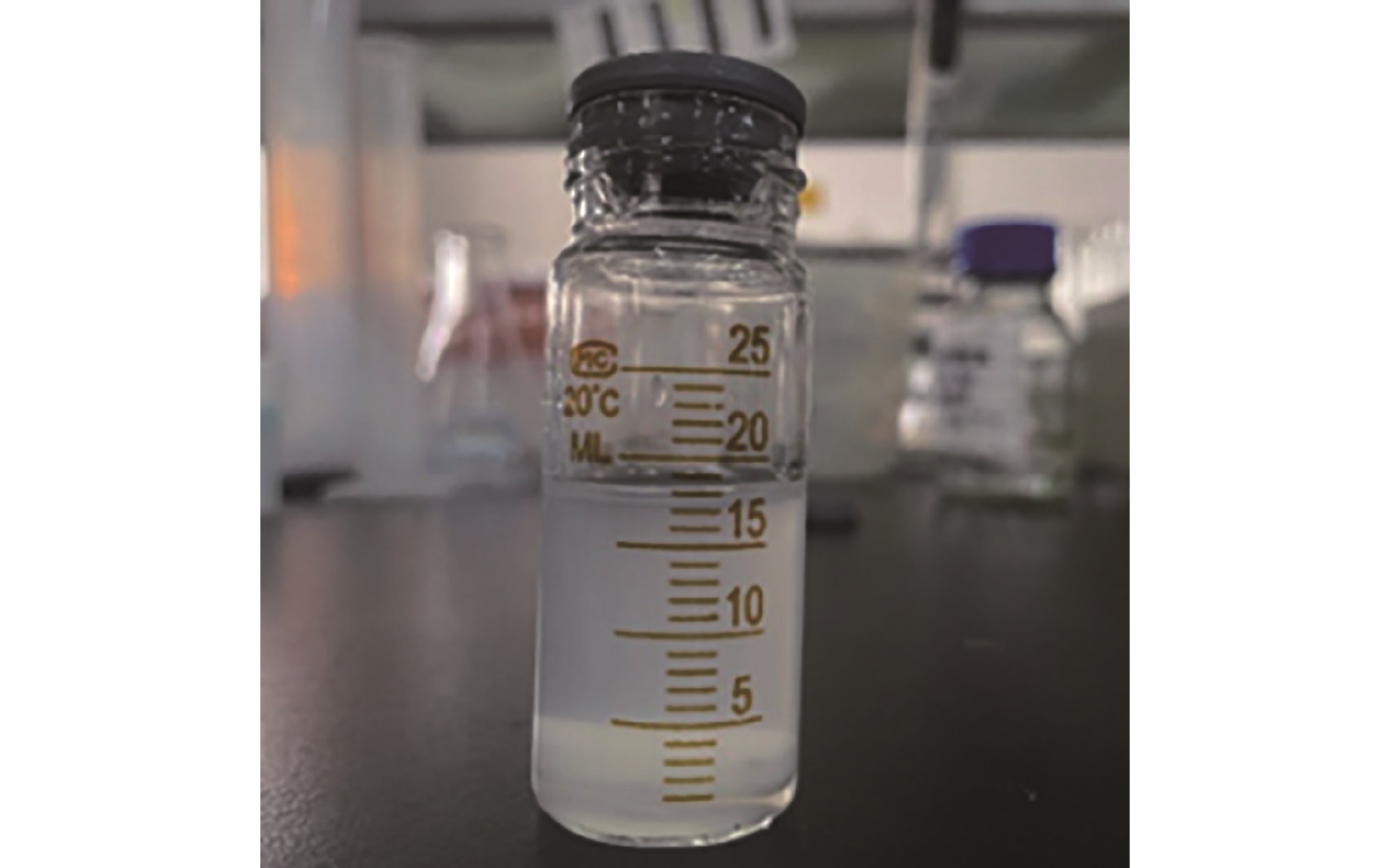
 Abstract
Abstract FullText HTML
FullText HTML PDF 1742KB
PDF 1742KB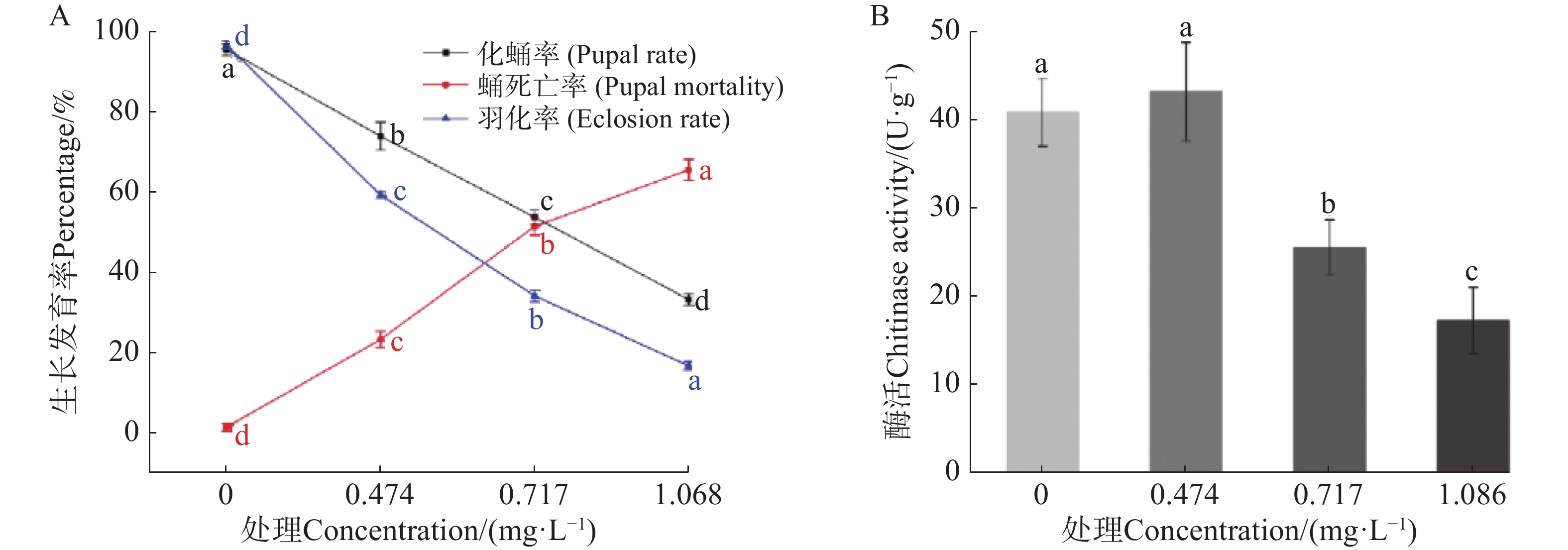
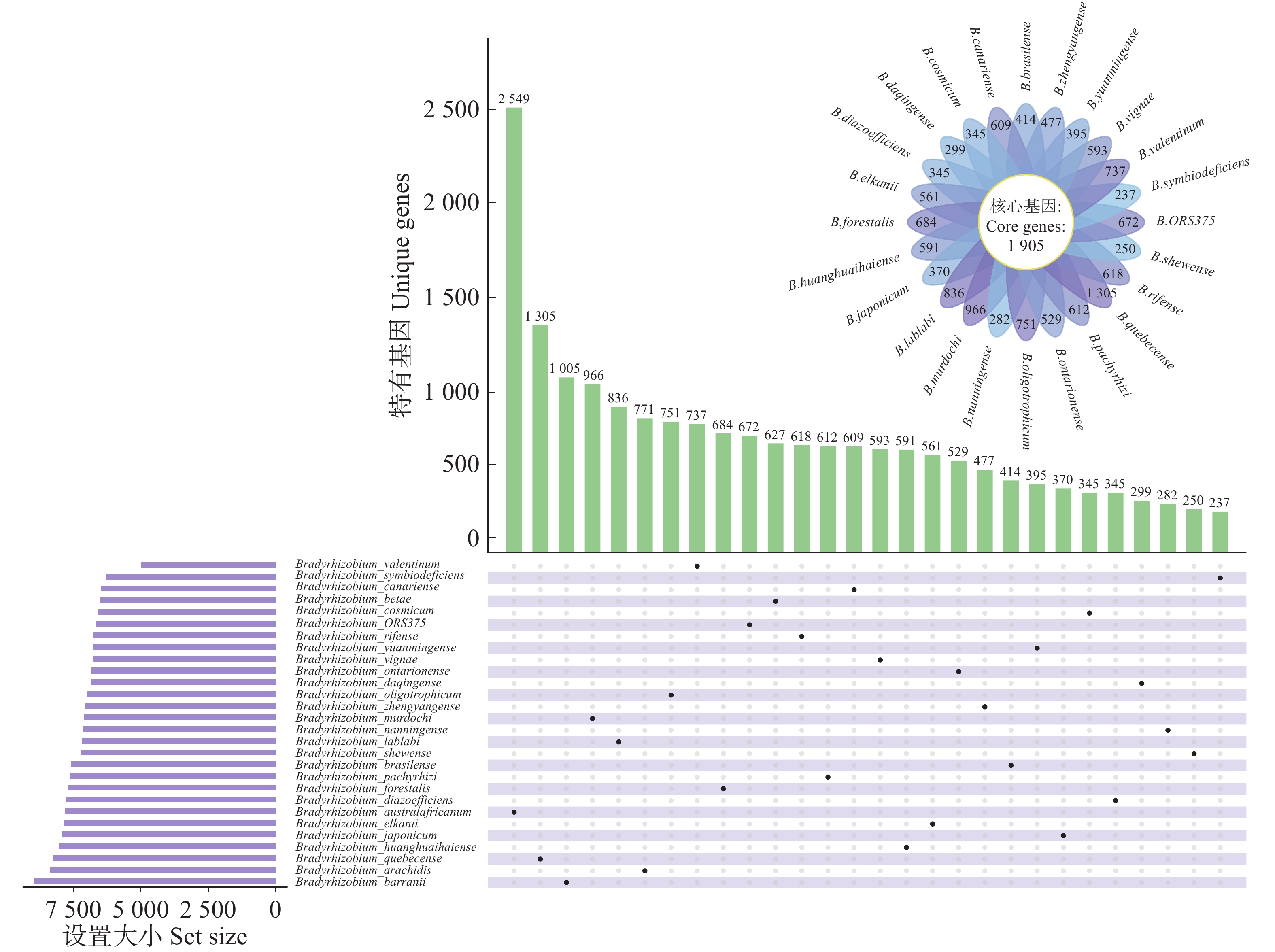



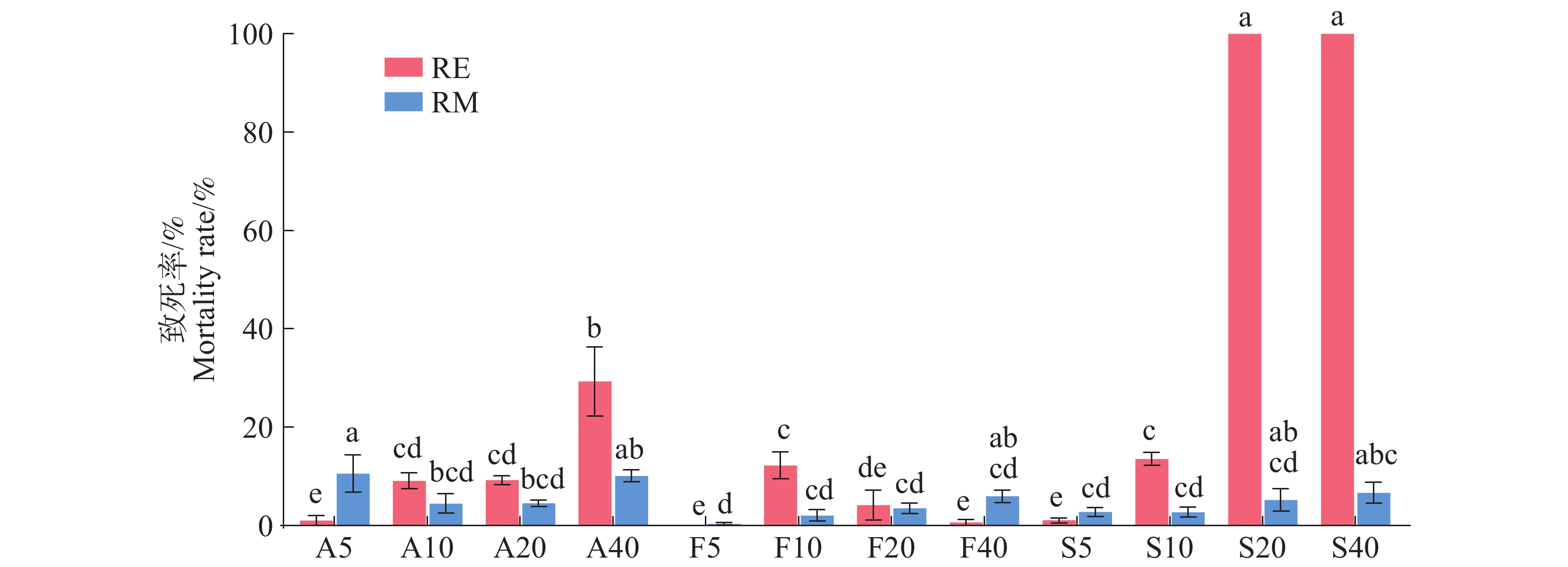
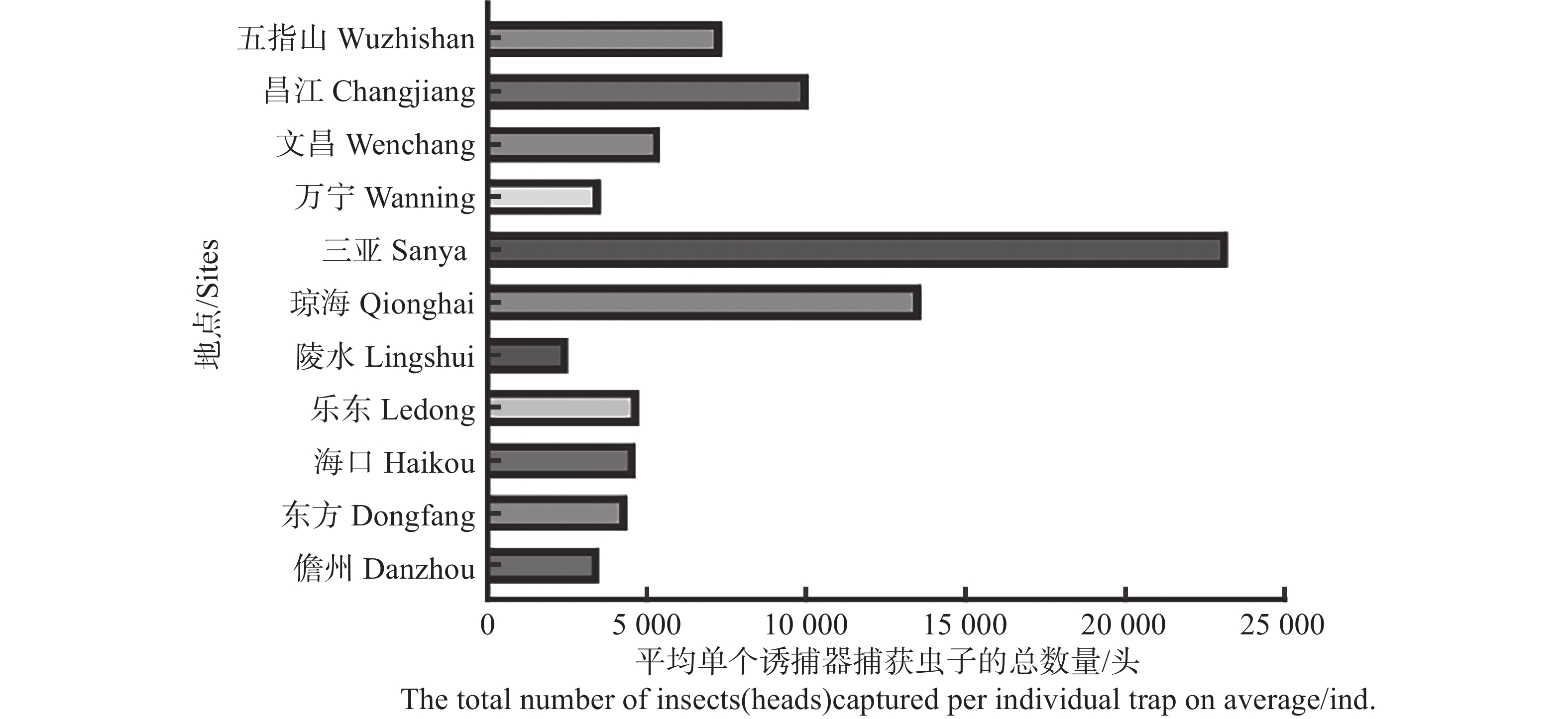

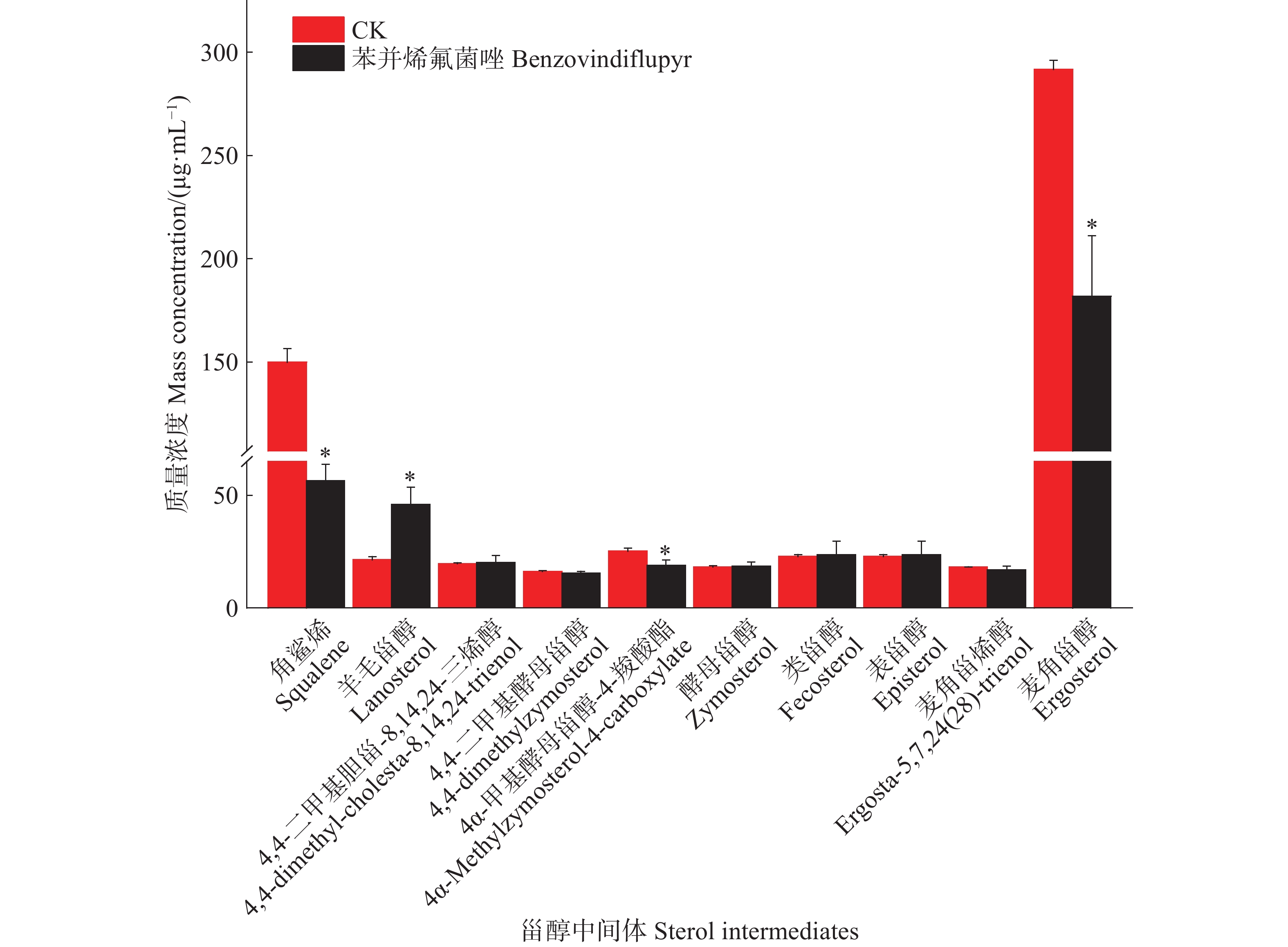
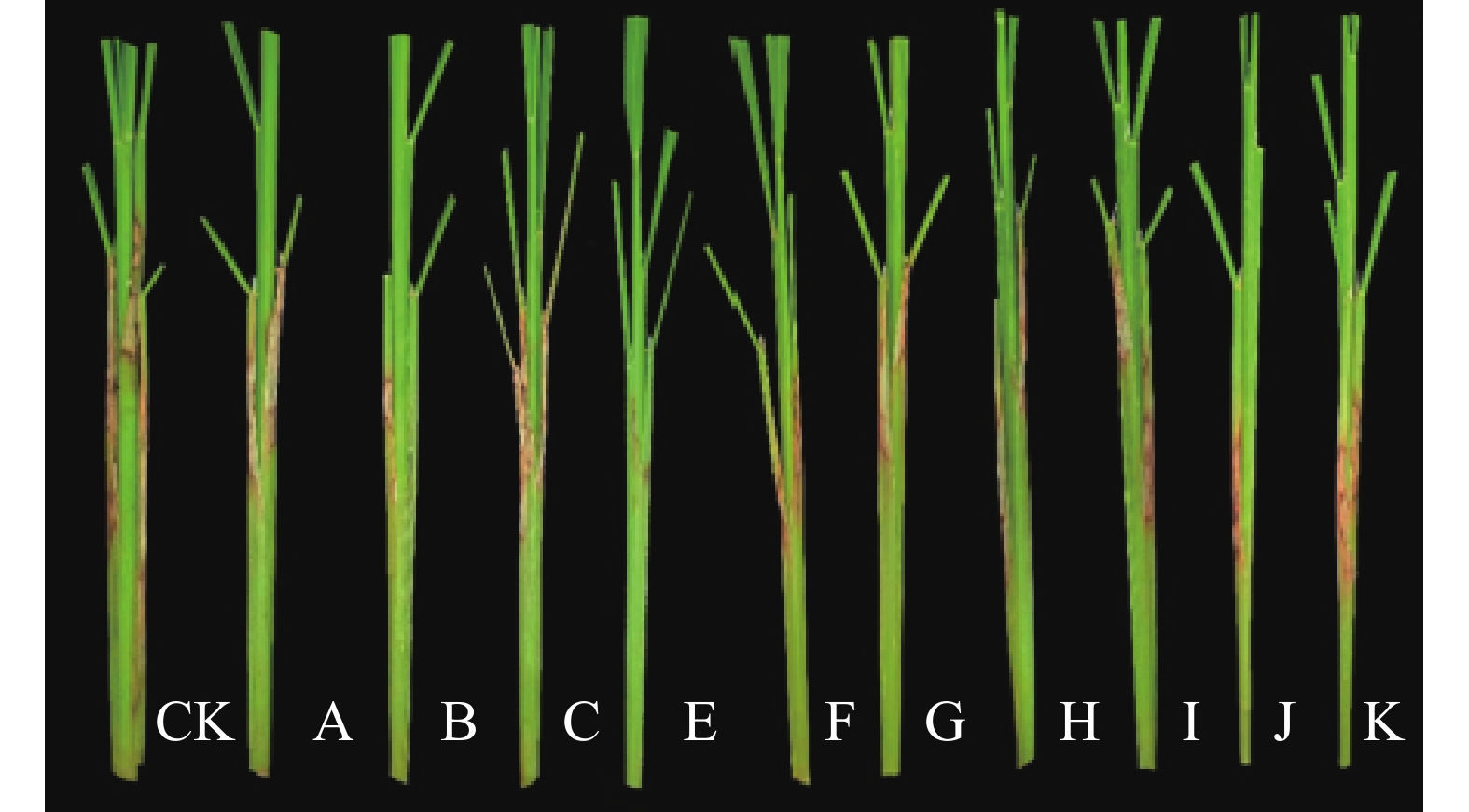
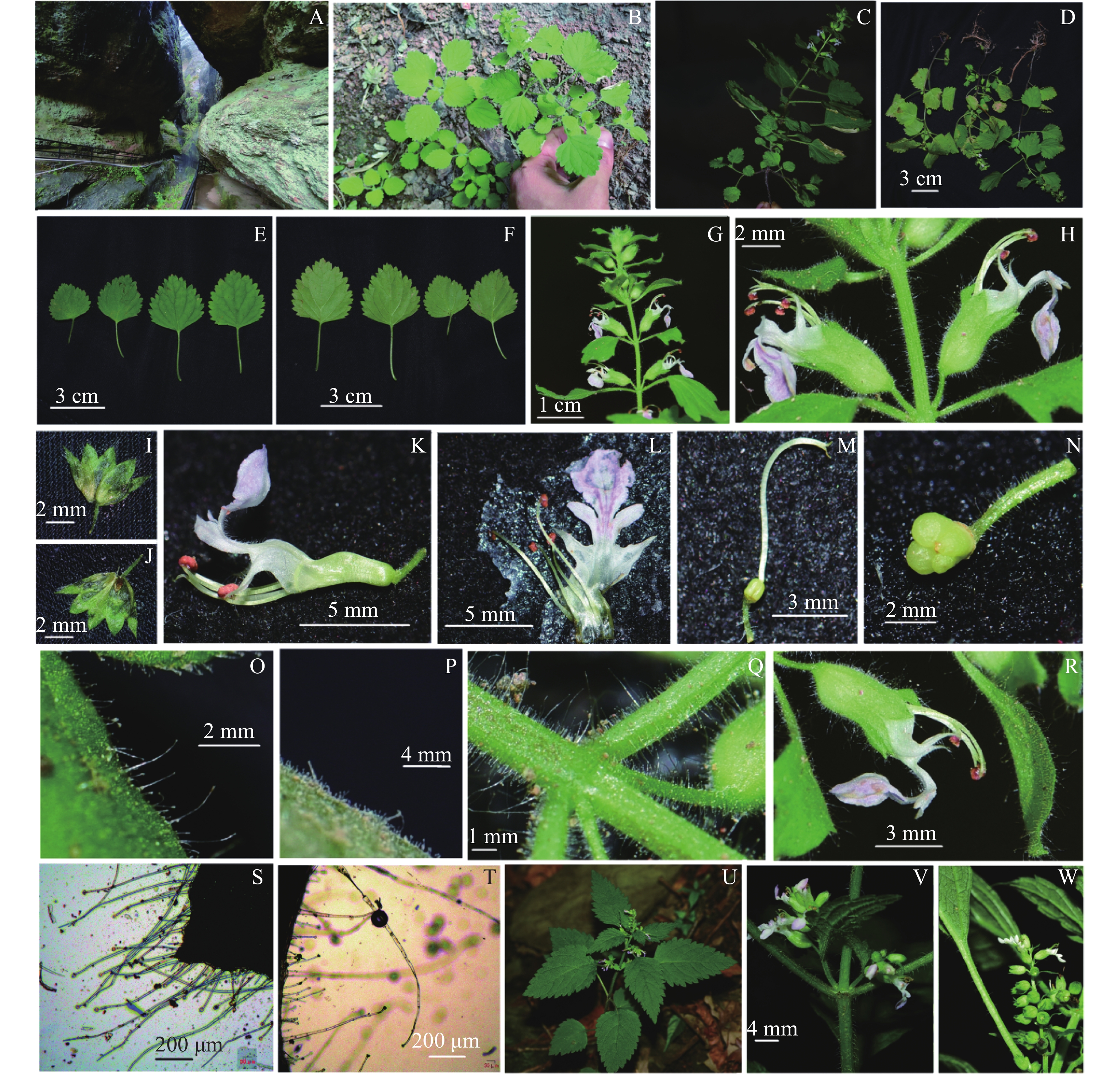
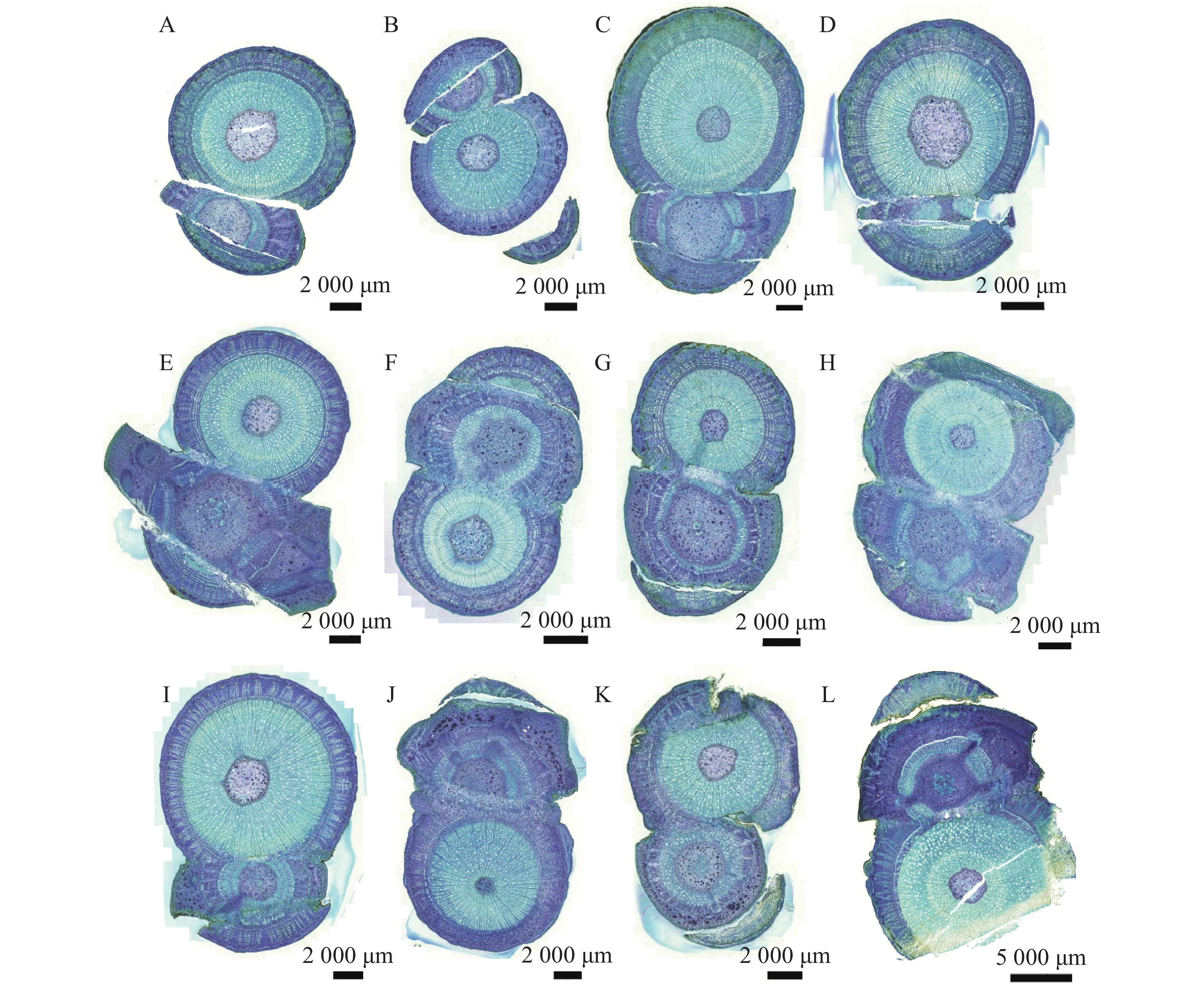
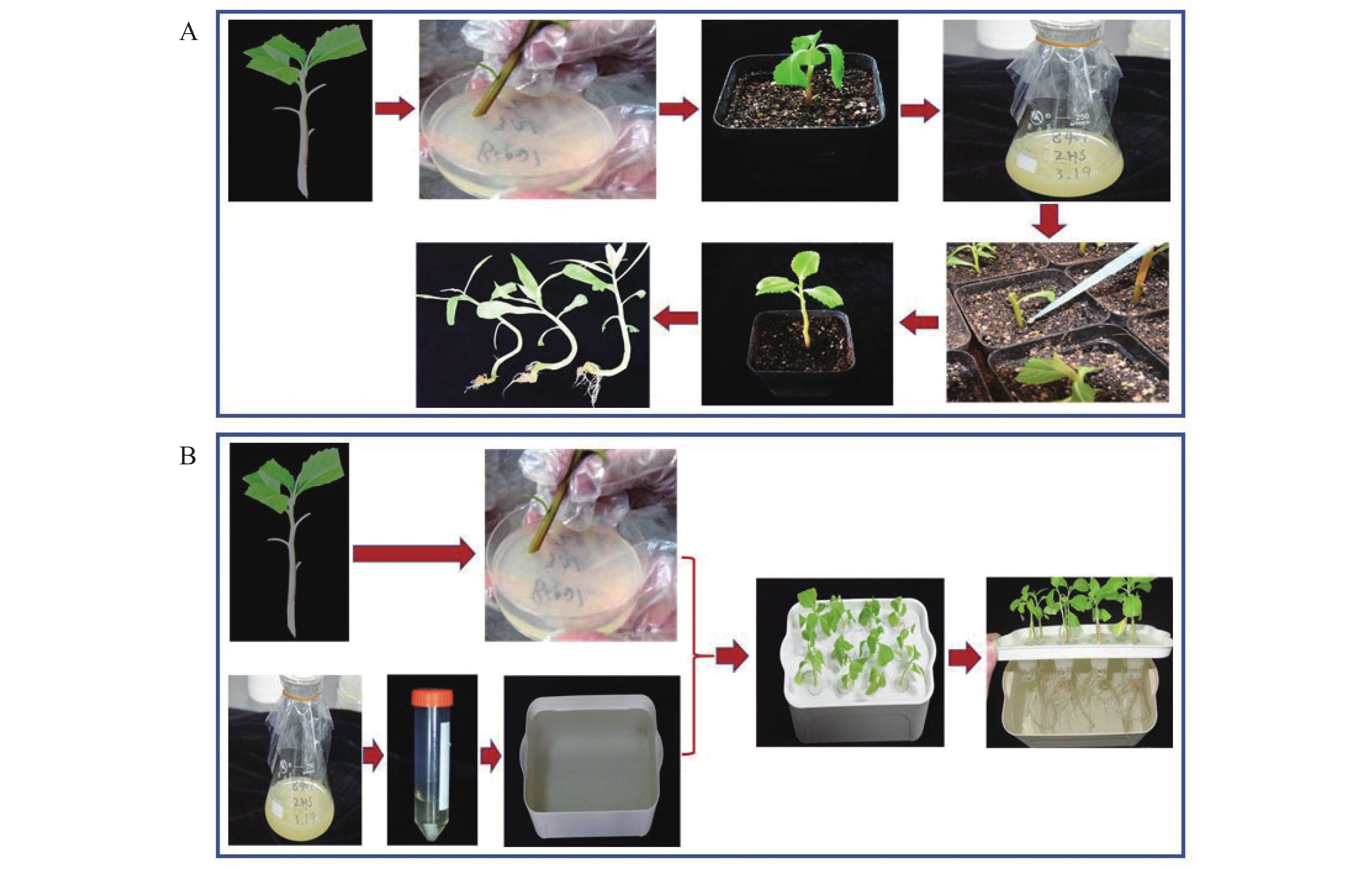
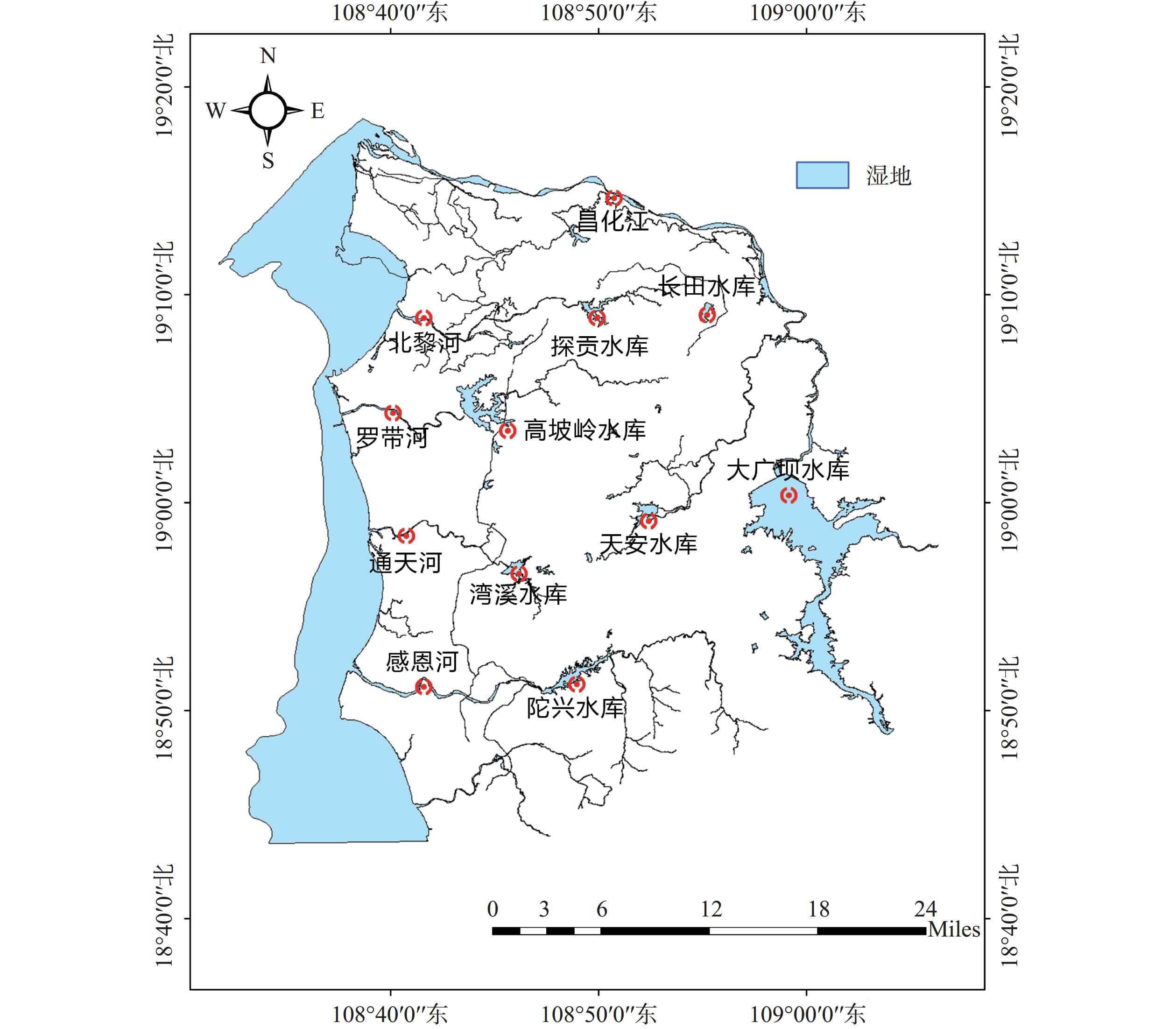
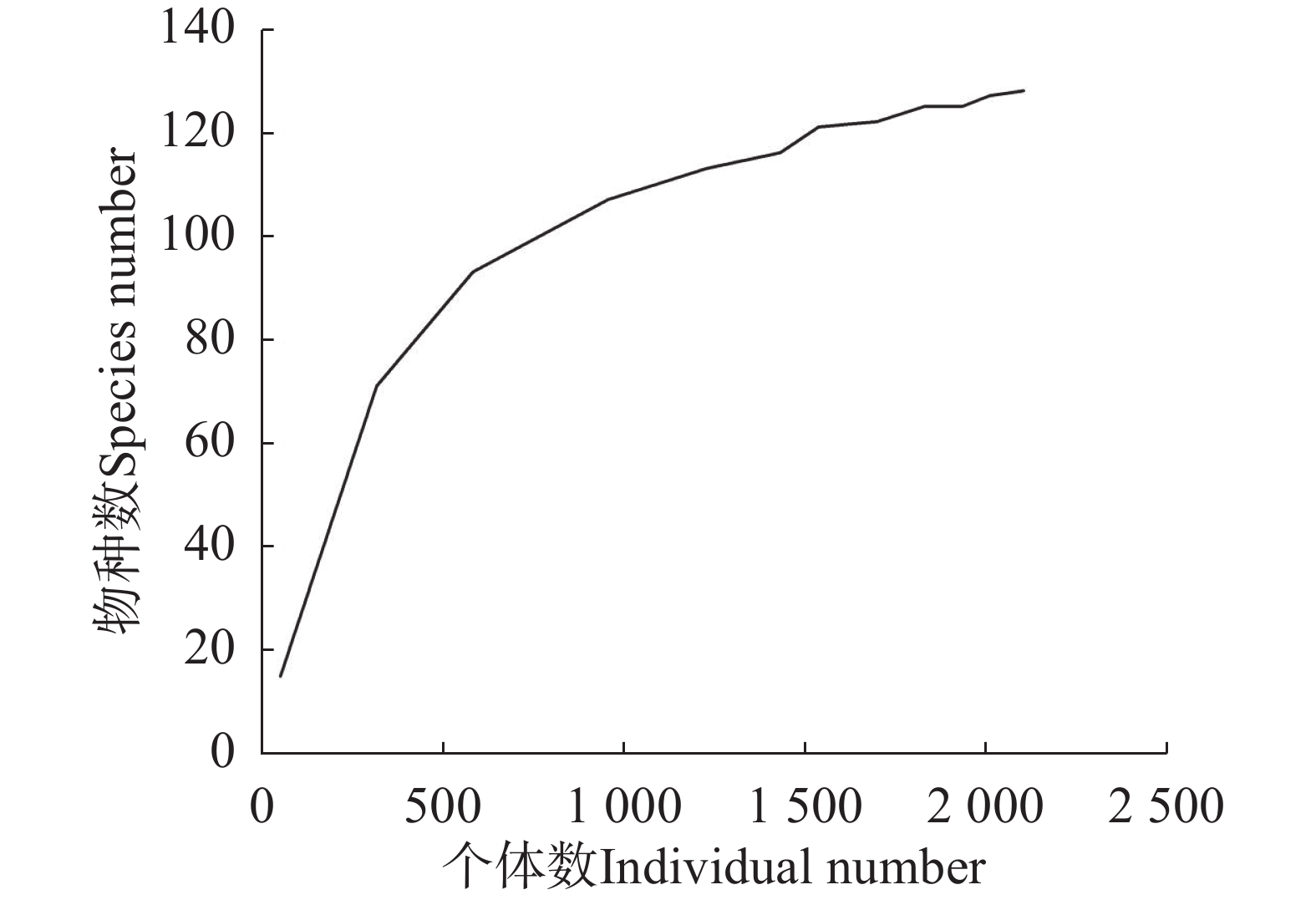
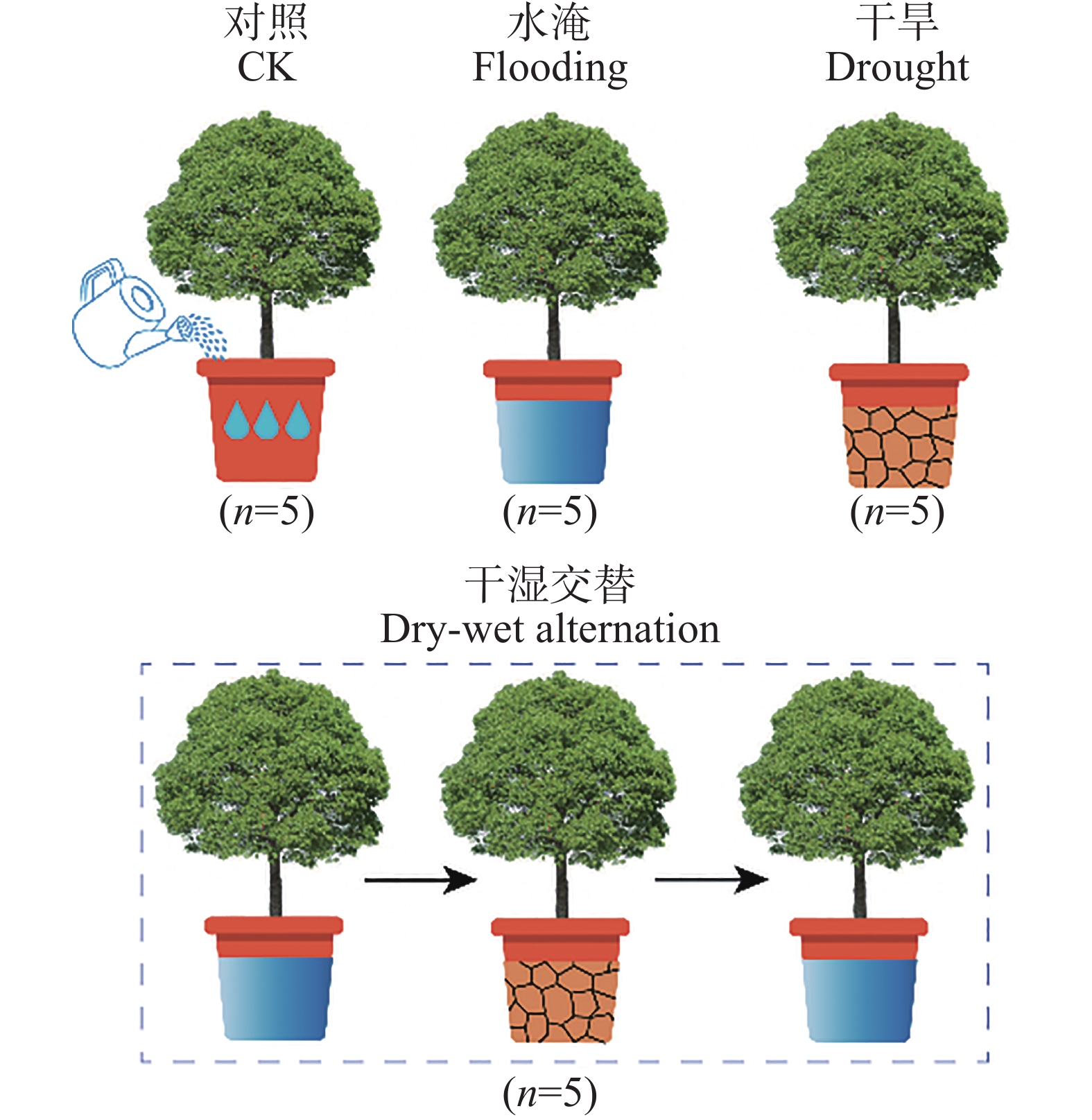
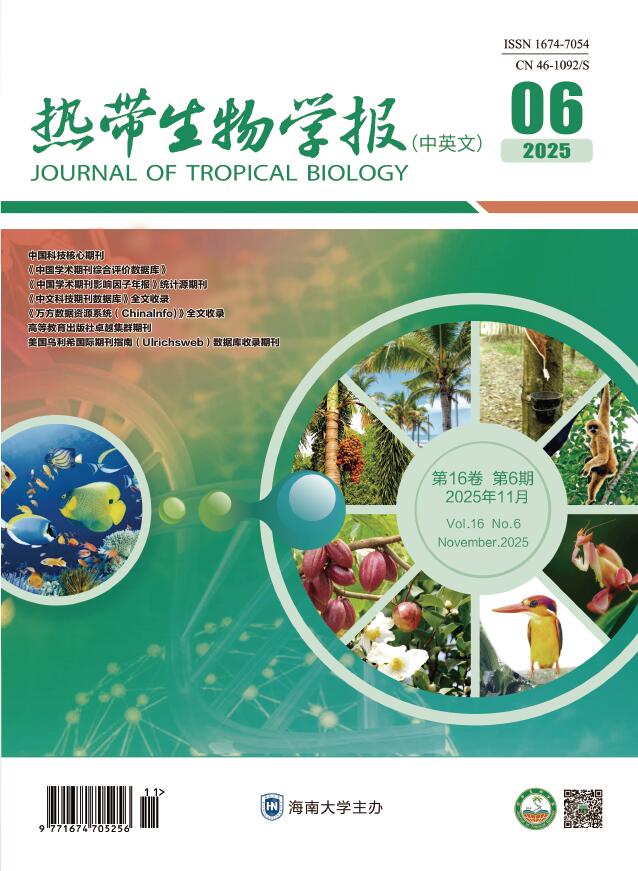
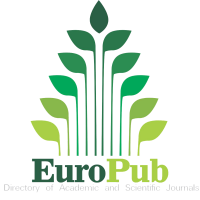


 Email alert
Email alert RSS
RSS